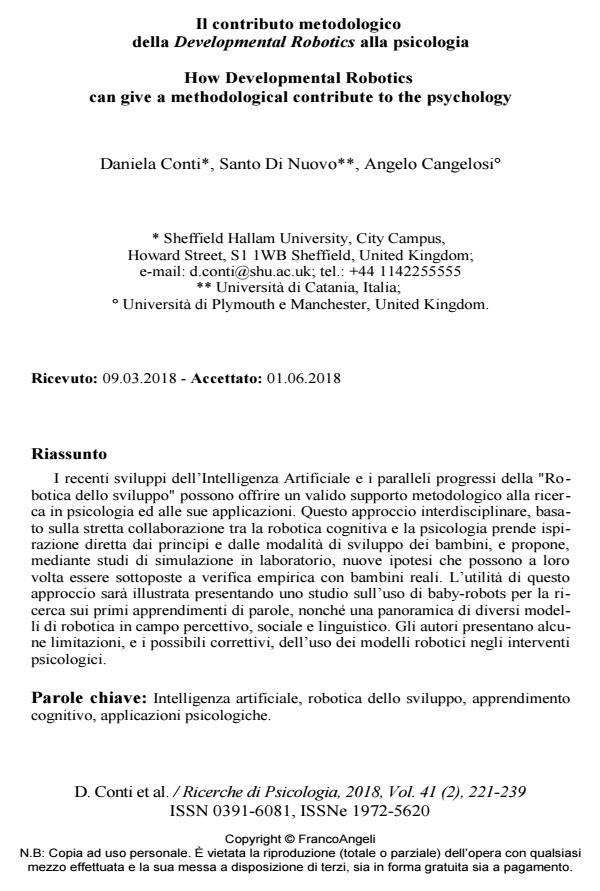Il contributo metodologico della Developmental Robotics alla psicologia
Titolo Rivista RICERCHE DI PSICOLOGIA
Autori/Curatori Daniela Conti, Santo Di Nuovo, Angelo Cangelosi
Anno di pubblicazione 2018 Fascicolo 2018/2
Lingua Italiano Numero pagine 19 P. 221-239 Dimensione file 237 KB
DOI 10.3280/RIP2018-002002
Il DOI è il codice a barre della proprietà intellettuale: per saperne di più
clicca qui
Qui sotto puoi vedere in anteprima la prima pagina di questo articolo.
Se questo articolo ti interessa, lo puoi acquistare (e scaricare in formato pdf) seguendo le facili indicazioni per acquistare il download credit. Acquista Download Credits per scaricare questo Articolo in formato PDF

FrancoAngeli è membro della Publishers International Linking Association, Inc (PILA)associazione indipendente e non profit per facilitare (attraverso i servizi tecnologici implementati da CrossRef.org) l’accesso degli studiosi ai contenuti digitali nelle pubblicazioni professionali e scientifiche
I recenti sviluppi dell’Intelligenza Artificiale e i paralleli progressi della "Robotica dello sviluppo" possono offrire un valido supporto metodologico alla ricerca in psicologia ed alle sue applicazioni. Questo approccio interdisciplinare, basato sulla stretta collaborazione tra la robotica cognitiva e la psicologia prende ispirazione diretta dai principi e dalle modalita di sviluppo dei bambini, e propone, mediante studi di simulazione in laboratorio, nuove ipotesi che possono a loro volta essere sottoposte a verifica empirica con bambini reali. L’utilita di questo approccio sara illustrata presentando uno studio sull’uso di baby-robots per la ricerca sui primi apprendimenti di parole, nonche una panoramica di diversi modelli di robotica in campo percettivo, sociale e linguistico. Gli autori presentano alcune limitazioni, e i possibili correttivi, dell’uso dei modelli robotici negli interventi psicologici.
Parole chiave:Intelligenza artificiale, robotica dello sviluppo, apprendimento cognitivo, applicazioni psicologiche.
Daniela Conti, Santo Di Nuovo, Angelo Cangelosi, Il contributo metodologico della Developmental Robotics alla psicologia in "RICERCHE DI PSICOLOGIA " 2/2018, pp 221-239, DOI: 10.3280/RIP2018-002002